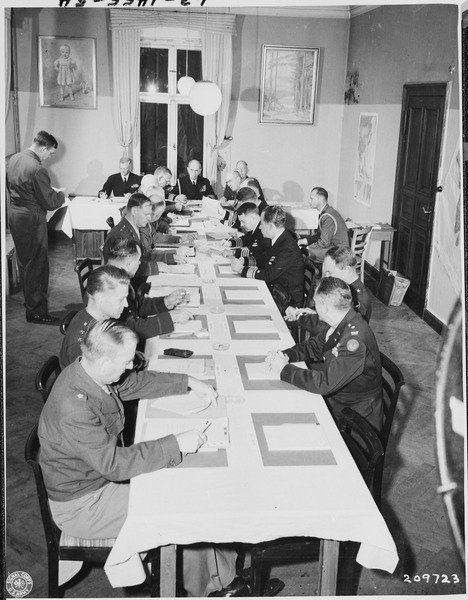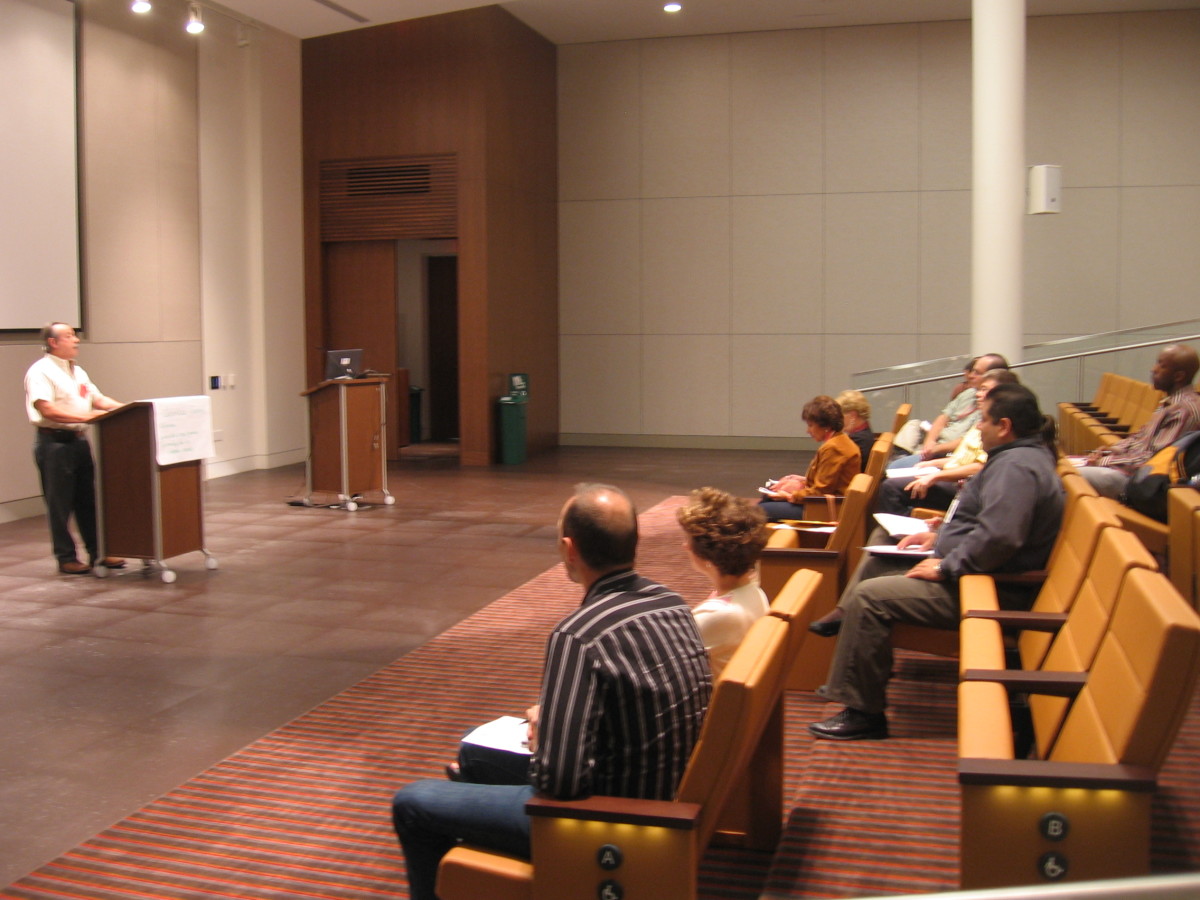How to Run a Meeting - with a Purpose

Effective Meetings Should Have a Goal
This article is for anyone who runs meetings, whether in a for profit business or a nonprofit. it is also for you if you sit on the board or executive committee. You may want to pass it on to the person in charge. It's always easier to use a third party opinion rather than tell someone they are screwing things up. Effective meetings are the only kind of meetings worth attending.
Meetings are necessary, so it makes no sense to try to run an organization by email or phone without face to face meetings. But meetings can also be dreadful affairs, populated by self appointed orators who see no problem with taking up the valuable time of all of their fellow attendees.
Like most of the necessary things in life, a meeting should follow specific rules for it to be successful. A meeting, even if it is a regularly scheduled one, has to have a goal toward which all of the attendees can aim. Without a goal a meeting is nothing more than a get-together.
How Not to Run a Meeting
Does the following story look familiar? The meeting starts at 8 PM, toward the end of a long day for everyone in attendance. The meeting leader, let's call him the Chairman, calls the meeting to order 10 minutes late. He begins by asking for the usual secretary's report. Because the minutes of the previous meeting were not sent out before this meeting, everyone must take time to peruse the minutes to make sure they are accurate. The inevitable questions come, followed by a round table discussion of some minor points in the minutes. The minutes are finally voted on and approved by 8:45. Next is the treasurer's report, also full of fresh surprises because, like the minutes, it was not sent out to the members in advance. This results in a half hour of questions and clarifications before the report is voted on and accepted.
Then comes the report from the Chairman himself. Speaking extemporaneously, he launches into a stream of consciousness about his opinions of where the organization is at the moment, and his thoughts going forward. After his 20 minute speech, he asks if there are any questions. This opens the floor for any member to "ask" questions, but often to make his own speech. The Chairman calls on a particularly loquacious member as everyone cringes and checks their watches. The time is now 9:05 PM. The talkative one launches into a speech, the purpose of which is lost on everyone in attendance. He is still going strong after 15 minutes. It never occurs to the Chairman to ask the speaker to wrap it up. Five other members weigh in with various questions and comments.
Next come the committee reports. Because no summaries were sent out in advance, the chairs of each committee prattle on in the hope that they won't have to repeat themselves when asked a question.
The time is now 10 PM. The Chairman announces it's time to discuss Old Business, which is exactly what everyone has been talking about for an hour. After some rehashing of what was already discussed, the Chairman announces it's time for New Business. This provides the opportunity for people to bring up anything new that's on their minds. Again, the Chairman lets to talk fest play on, with no interference from him, nor even a hint of his role as moderator. At 10:45 a brave soul shouts "Motion to Adjourn." The Chairman declares the motion to be tabled because the guy didn't get a second to his motion. Finally at 11:10 the same guy shouts his "Motion to Adjourn," and this time he gets a second. The motion passes by a slim majority and the meeting is finally over.
THIS is no way to run a meeting. The overall purpose of any meeting is for the attendees to discharge their responsibilities to the organization. In a meeting conducted like the story above, almost every attendee's job is thwarted - by lack of focus and organization.
The Well Run Meeting
Over the years I have been on countless boards, sometimes as a member and sometimes as a Chairman or President. I have written extensively on this subject, and my writings are drawn from my experiences, both positive and negative. Most of the views that I express are things that I learned from colleagues, those who I admire and have learned from as well as those who did everything wrong - Yes, these were powerful learning experiences for me as well. Try these helpful hints at your next meeting. Your fellow board members will be happy that you did.
The Philosophy of a Meeting
The purpose of a business meeting is to forward the goals of the organization. Any meeting that does not accomplish this goal is a poorly run meeting. A business meeting should have a set beginning and an end. It should be conducted based on pre submitted reports from committee chairs. There should be a strict time limit on how long any individual member can speak. The Chairman has the responsibility to run the meeting efficiently and expeditiously.
Gain Consensus About the Conduct of Meetings
This is the first job of a Chairman. It's best to do this at the beginning of a term when everyone expects to person at the head of the table to announce new things, but it can be done at any time. By gaining consensus I mean getting people to see the wisdom of what you are saying, not just by setting down a bunch of rules that you came up with. The way to do this is to first bring up a proposition and then toss it on the table for discussion. For example, "People have told me that some of us speak for too long and tie up the meeting with their own thoughts. Does anyone think that we should have a time limit (flexible, of course depending on the circumstances) on how long a person should have to make a point?" Because you are talking about something that bothers everyone (including the blabbermouths who don't think you're talking about them) you will be amazed at how you will get agreement on this point. Then ask: "Should all reports be emailed in advance rather than sprung on people at the meeting for the first time?" How can anyone argue with that? Also discuss the time of the meeting. I have seen organizations where everyone hated the meeting time (usually because it was too late) but assumed that everyone else liked it that way. Get consensus on the time of the meeting and how long it shall last. My personal prejudice is that an hour is too long and an hour and a half is about right. Emergency circumstances will always demand flexibility. Some meetings just have to last longer such as the annual vote on a budget.
The key with the consensus meeting is to record the decisions and hand them out at the beginning of every meeting. They should be entitled "Meeting Rules." You may want to have a paragraph under the title saying that "These rules were adopted at a regular meeting of the board on such and such a date." This makes it more empowering for you the Chairman to say to people, "Hey folks, we all adopted these rules."
Video Training for Robert's Rules
The Basics for Running Good Meetings
1. Robert's Rules of Order. Meetings should be run according to a set of rules, and you need go no further than the time honored classic Robert's Rules of Order. The first edition of the book was published by an Army Colonel Henry Robert in 1876. Its full title was a Pocket Manual for Rules of Order for Deliberative Assemblies. Now in its eleventh edition under the name Robert's Rules of Order Newly Revised, it is the most commonly used set of procedural rules of order in use to this day. It's amazing that the bylaws of many an organization do not contain a statement to this effect: "The meetings of this organization shall be conducted under the current edition of Robert's Rules of Order." Without such a by-law entry, there is no basis for conducting the meeting according to Robert's Rules. A well run organization should have a parliamentarian who is deeply familiar with Robert's Rules, and who can give a quick opinion if an action is challenged.
2. Agenda - If not requested in advance an item will not be placed on the agenda. Prior to the meeting the Chairman solicits items for the agenda, with a notation that if an item is not placed on the agenda prior to a meeting, it is NOT on the agenda. If a person pipes up at the beginning of a meeting and asks if something can be added to the agenda, ask for a motion, a second and a vote. If the item is allowed, the late submitter will at least know that he was asking for something way out of order. Following this rule will save enormous amounts of time.
3. Limited speaking times. As I discussed above in gaining a consensus, this should not be difficult, but there will come a time for you, Mr. or Ms. Chairman, to blow the whistle and let a speaker know he's gone over. I served on a board once with a guy who would take a deep breath and unleash a slow moving torrent of words without taking a breath. He didn't so much speak as drone. It is the Chairman's job to show respect for all of the attendees by reigning in a blabbermouth. If the endless wordsmith keeps talking you can politely say, "Joe, we all agreed to these rules. If you feel the rules should be suspended in your case, I'll entertain a motion." Such a motion will never be made.
4. Length of the Meeting. A meeting should have a specific time period. Circumstances may dictate that a meeting should go beyond it's time, but this should be done by formal motion and vote. Nothing is worse than a meeting that goes on with no end in sight. Enforcing the meeting length is a critical role of the Chairman. There should be a corollary to Yogi Berra's famous dictum: "It ain't over till it's over," and it should be, "When it's over it's over."
A meeting can be an event where things happen and the mission of an organization is moved forward. Too often meetings are gag fests with no apparent purpose. It's up to the leader of the organization to make sure that meetings make a difference.
Copyright © 2012 By Russell F. Moran









